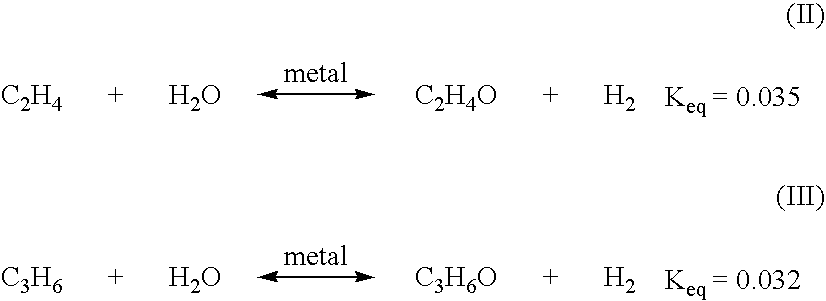Low metal content catalyst compositions and processes for making and using same
a catalyst composition and low metal content technology, applied in the direction of hydrocarbon preparation catalysts, physical/chemical process catalysts, hydrocarbon oil treatment products, etc., can solve the problems of unfavorable metal-catalyzed side reaction byproducts formed in the oxygenate-to-olefin reaction system, and undesirable byproduct formation in the mto reactor. achieve the effect of advantageously reducing the amount of metal-catalyz
- Summary
- Abstract
- Description
- Claims
- Application Information
AI Technical Summary
Benefits of technology
Problems solved by technology
Method used
Image
Examples
example i
Formulating a Low Metal Content Molecular Sieve Catalyst Composition
[0164]In order to provide a better understanding of the present invention, the following experimental example is offered. In this example, a molecular sieve catalyst composition having a low-metal content matrix material was synthesized. In the experiment, a SAPO-34 molecular sieve catalyst composition, designated catalyst composition “A”, was formulated following U.S. Pat. No. 6,440,894, the entirety of which is incorporated herein by reference. The silicon to aluminum atomic ratio of the as-synthesized SAPO-34 molecular sieve used to form the catalyst composition was determined to be 0.068 based on Inductively Coupled Plasma (ICP) spectroscopy analysis.
[0165]The matrix material used was specifically selected for its low metal content. Specifically, the matrix material selected was a kaolin clay sample containing less than 7,000 wppm iron (specifically 5,400 wppm iron) and iron-containing species, less than 5,000 w...
example ii
Comparing the Low Metal Content Molecular Sieve Catalyst Composition with Various Metal-Loaded Molecular Sieve Catalyst Compositions
[0166]In an effort to better understand the effects that various metals have on MTO reaction systems, and particularly metals commonly found in MTO catalyst compositions, an experiment was conducted to determine whether various metals typically found in formulated molecular sieve catalyst compositions play a role in the formation of side reaction byproducts in an MTO reaction system, and if so, which metals most readily catalyze the formation of side reaction byproducts. The metals analyzed are commonly found in catalyst composition matrix materials.
[0167]Specifically, samples of catalyst composition “A” from Example I, above, which contained molecular sieve, binder and matrix material, were loaded with iron, nickel, titanium and chromium, respectively, through wet impregnation. Methanol was reacted over these loaded catalyst compositions as well as a c...
PUM
| Property | Measurement | Unit |
|---|---|---|
| d50 particle size | aaaaa | aaaaa |
| temperature | aaaaa | aaaaa |
| particle size | aaaaa | aaaaa |
Abstract
Description
Claims
Application Information
 Login to View More
Login to View More - R&D
- Intellectual Property
- Life Sciences
- Materials
- Tech Scout
- Unparalleled Data Quality
- Higher Quality Content
- 60% Fewer Hallucinations
Browse by: Latest US Patents, China's latest patents, Technical Efficacy Thesaurus, Application Domain, Technology Topic, Popular Technical Reports.
© 2025 PatSnap. All rights reserved.Legal|Privacy policy|Modern Slavery Act Transparency Statement|Sitemap|About US| Contact US: help@patsnap.com


